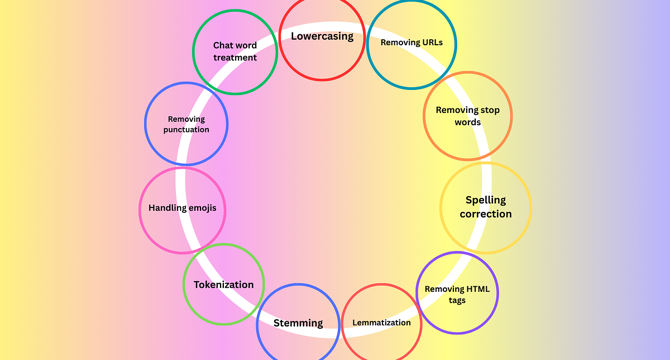Data Science News
Medium
268

Image Credit: Medium
From Cells to Circuits: How Biology is Shaping the Future of AI
- Artificial intelligence (AI) draws inspiration from biological systems like the brain and cellular processes, aiming to replicate their adaptability and precision.
- Nature's solutions to complex problems through learning, adaptation, and evolution serve as the blueprint for resilient and adaptive AI models.
- AI technologies such as neural networks and genetic algorithms are influenced by biological intelligence, offering real-world applications in fields like sequence classification and robotics.
- Cellular communication in AI systems has been modeled after cell-to-cell signaling, enhancing the design of communication protocols.
- Real-world applications like LinOSS and self-healing swarm robotic systems highlight the efficacy of AI models inspired by biological dynamics.
- AI development mimics biological systems' decentralized intelligence, like octopus arms making independent decisions, aiming for a more collective decision-making approach.
- Exploring biological adaptability, AI innovation seeks to emulate the survival capabilities of organisms like tardigrades in extreme environments.
- By understanding and learning from nature, AI can evolve to be more resilient, adaptive, and lifelike, moving beyond mere imitation to true integration with biological principles.
- Nature's neuroplasticity, problem-solving tactics of ants, and survival mechanisms of tardigrades offer valuable insights for developing AI that goes beyond programmed instructions.
- The future of AI lies in embracing nature's wisdom, evolving alongside biological systems, and harnessing their innate ability to adapt, heal, and evolve over time.
Read Full Article
16 Likes
Analyticsindiamag
427

Image Credit: Analyticsindiamag
Cursor Pro is Now Free for Students
- AI coding tool Cursor is now offering students a free one-year Pro subscription, including access to premium models and fast request limits.
- Students can verify their status using a student email ID on Cursor's official website to avail the free Pro plan for 12 months, which will renew at the regular price unless canceled.
- Existing Pro subscribers will get a refund for unused time, and the student offer will be applied immediately, granting 500 fast requests per month for premium models and unlimited slow requests.
- Students can cancel anytime and retain access until the end of the billing cycle, amidst reports of OpenAI acquiring Windsurf, another AI coding tool for $3 billion, which introduced a student discount and 'Codeium AI Fellowship' program.
Read Full Article
25 Likes
Analyticsindiamag
382

Image Credit: Analyticsindiamag
Shouldn’t Git Be Taught in Engineering Colleges?
- There is a growing need to bridge the gap between academia and industry in computer science by integrating universally preferred tools like Git in engineering programs.
- Many developers express surprise at the lack of Git training in undergraduate computer science and engineering programs, despite its essential role in the industry.
- Some premier engineering colleges in India and universities in the United States also do not include Git training in their curriculum, highlighting a broader issue with computing ecosystem literacy.
- While some suggest hands-on learning of Git is more beneficial in real-world scenarios, others argue for an early mention of Git in academic projects to naturally integrate it into students' toolkits.
Read Full Article
23 Likes
Analyticsindiamag
69

Image Credit: Analyticsindiamag
Space Tech Startup InspeCity Raises $5.6 Mn for In-Orbit Satellite Servicing
- InspeCity, a Maharashtra-based space-tech company, raised $5.6 million in seed funding for satellite life extension and sustainable space operations.
- The funding was led by Ashish Kacholia, with contributions from Speciale Invest, Shastra VC, Antler India, DeVC, MGF Kavachh, and Anicut Capital.
- InspeCity aims to redefine satellite operations economics and sustainability through its propulsion, robotics, and Rendezvous, Proximity Operations, and Docking (RPOD) technologies.
- The funding will be used to space-qualify technologies, expand the engineering team, fast-track global deployment, and build India's space infrastructure presence.
Read Full Article
4 Likes
Medium
444

Image Credit: Medium
6 AI Agents That Can Replace Your Jobs
- Twitter operated more productively with fewer employees, releasing more features while having fewer staff.
- Meta and Amazon underwent significant job cuts in 2023, yet their stock prices doubled and had successful years.
- As AI automation advances in 2025, six AI agents are highlighted that have the potential to replace various job roles.
- These AI agents include tools for creating ads, videos, finding influencers, writing reports, managing online presence, and handling SEO tasks.
Read Full Article
22 Likes
Analyticsindiamag
75

Image Credit: Analyticsindiamag
Sarvam AI Launches Bulbul, New Voice Model for Indian Market
- Sarvam AI has launched Bulbul, a new speech AI model supporting 11 Indian languages with natural accents for authentic voice interactions.
- Bulbul focuses on providing real, non-robotic voice interactions with lightning-fast performance and custom voices for brands.
- The first version, Bulbul v1, was released in August last year with six distinct voices catering to various communication needs.
- Sarvam AI was selected by the Indian Government to develop India's sovereign Large Language Model as part of creating indigenous AI capabilities.
Read Full Article
4 Likes
Analyticsindiamag
311

Routematic Raises $40 Million in Series C Round Led by Fullerton, Shift4Good
- Routematic, a corporate commute platform in India, has raised $40 million in a Series C funding round led by Fullerton Carbon Action Fund and Shift4Good.
- The company plans to expand its fleet to over 10,000 vehicles and convert 30% to electric by March 2026 to strengthen sustainable corporate mobility.
- India's employee transportation market is projected to reach $13.2 billion by 2030, driving demand for services like Routematic that focus on employee well-being and sustainability mandates.
- The funding will be used to scale AI-powered operations, establish city-level command centers, and continue creating efficient, environmentally responsible commuting solutions, as stated by company executives.
Read Full Article
18 Likes
Analyticsindiamag
111

Indian VCs Want to Invest in Deep-Tech Startups Despite Govt Skepticism
- Indian venture capitalists are now showing interest in deep-tech startups focusing on hardware, AI, robotics, and space infrastructure, challenging the traditional focus on app development and IT services.
- At Startup Mahakumbh 2025, there was a debate sparked by the emphasis on shifting from convenience apps to deep-tech innovations by commerce minister Piyush Goyal.
- Investors like Kushal Bhagia defended their deep-tech investments, highlighting India's global competitive edge in this sector.
- Venture capital firm Seafund has been investing in startups across semiconductors, space tech, and AI-powered health tools, promoting a shift towards foundational technological innovations.
- India has seen a shift in its deep tech landscape, with startups emerging in sectors such as defence, computing, and space technologies, expanding beyond mobile apps and payment systems.
- Venture capitalists in India are not only providing funding but also guiding founders, building connections, and offering technical support to startups, contributing to the growth of deep-tech startups.
- A change in mindset among investors and founders, coupled with access to mentorship and capital, has allowed for riskier and more technical investments in deep tech startups.
- AI is evolving as a foundational element in startups, with lean, AI-native structures and AI integration in various sectors beyond core tech companies.
- Seafund is actively investing in deep-tech sectors such as energy, automation, and robotics, addressing challenges in India's dependence on imports and labour transitions by driving innovation in these spaces.
- Seafund's portfolio includes startups like TakeMe2Space in space tech, Calligo Tech in compute infrastructure, and Consint.ai in health tech, showcasing the diverse applications of deep tech in India.
Read Full Article
6 Likes
Medium
66

Image Credit: Medium
The Ultimate Guide to Reinforcement Learning in Efficient Machine Learning
- Reinforcement learning (RL) is revolutionizing efficient machine learning through cutting-edge algorithms and real-world applications, transforming AI by 2025.
- RL enables machines to learn by trial and error, similar to how humans learn from experience, without direct instructions. The RL agent interacts with its environment, receives rewards or penalties, and learns to maximize success.
- RL is crucial in efficient machine learning as it operates without requiring vast amounts of labeled data. It excels in dynamic environments where decisions are made incrementally, making it ideal for real-world scenarios with unpredictability and noisy data.
Read Full Article
3 Likes
Medium
148

Image Credit: Medium
Why Most NLP Projects Fail: A Beginner’s Guide to Text Preprocessing
- Text preprocessing is a crucial step in NLP projects to ensure model performance.
- Lowercasing text helps maintain consistency and reduce vocabulary size.
- Removing HTML tags, URLs, punctuation, and informal words enhances data quality.
- Spell correction tools like TextBlob are used to rectify common mistakes.
- Removing stop words can assist in improving processing speed and reducing tokens.
- Handling emojis based on task requirements can influence sentiment analysis results.
- Tokenization is essential to split text accurately for model understanding.
- Methods like split(), regex, and libraries like NLTK and SpaCy are used for tokenization.
- Stemming helps reduce words to their root form, useful for information retrieval systems.
- Porter Stemmer and Snowball Stemmer from NLTK are commonly used for stemming.
- Lemmatization ensures proper reduction of inflected words to their base form using WordNet.
Read Full Article
8 Likes
Towards Data Science
411

Regression Discontinuity Design: How It Works and When to Use It
- Article discusses Regression Discontinuity Design (RDD) as a method for causal inference in scenarios where traditional experimental methods are not feasible.
- RDD exploits cutoffs on a 'running' variable to estimate causal effects, assuming continuity holds.
- The article explains the core assumption of continuity using examples like legal drinking age laws.
- It emphasizes the importance of maintaining continuity to ensure the validity of RDD.
- The article delves into instrumental variables and the front-door criterion in RDD to identify causal effects.
- Practical application of RDD is illustrated in the context of e-commerce listing positions and their impact on performance.
- Modeling choices in RDD, such as parametric vs. non-parametric approaches, polynomial degree, and bandwidth, are discussed.
- Placebo testing is highlighted as a method to validate results, along with the importance of continuity assumption and density continuity testing.
- The article concludes by stressing the careful application of RDD and provides additional resources for further learning.
Read Full Article
24 Likes
Towards Data Science
358

We Need a Fourth Law of Robotics in the Age of AI
- Artificial Intelligence has brought numerous advancements but also ethical and social challenges, as shown by tragic incidents like chatbot involvement in harmful behaviors.
- Isaac Asimov's Three Laws of Robotics were crafted for physical robots, but AI now exists predominantly in software, posing new risks like emotional manipulation through human-like interactions.
- Calls for a Fourth Law of Robotics to address AI-driven deception and forbid AI from pretending to be human to mislead or manipulate individuals have surfaced.
- This proposed law is crucial in combating threats like deepfakes and realistic chatbots that deceive and emotionally harm individuals, highlighting the need for robust technical and regulatory measures.
- Implementing this Fourth Law involves technical solutions like content watermarking, detection algorithms for deepfakes, and stringent transparency standards for AI deployment, along with regulatory enforcement.
- Education on AI capabilities and risks is essential, emphasizing media literacy and digital hygiene to empower individuals to recognize and address AI-driven deception.
- The proposed Fourth Law aims to maintain trust in digital interactions by preventing AI from impersonating humans, ensuring innovation within a framework that prioritizes collective well-being.
- The need for this law is underscored by past tragedies involving AI systems, signaling the importance of establishing clear principles to protect against deceit, manipulation, and psychological exploitation.
- Establishing guidelines to prevent AI from impersonating humans will lead to a future where AI systems serve humanity ethically, promoting trust, transparency, and respect.
Read Full Article
21 Likes
Towards Data Science
68

Retrieval Augmented Classification: Improving Text Classification with External Knowledge
- Text Classification is crucial for various NLP applications, including spam filtering and chatbot categorization.
- Utilizing Large Language Models (LLMs) like zero-shot classifiers can expedite text classification deployment.
- LLMs excel in low-data scenarios and multi-language tasks but require prompt tuning for optimal performance.
- Custom ML models offer flexibility and accuracy in high data regimes but demand retraining and substantial labeled data.
- Retrieval Augmented Generation (RAG) and Few-shot prompting aim to combine LLMs' benefits with custom models' precision.
- RAG incorporates external knowledge, enhancing LLM responses and reducing inaccuracies.
- The method involves curating a knowledge base, finding K-nearest neighbors for input texts, and employing an augmented classifier.
- The combined approach offers dynamic classification with improved accuracy but may incur higher latency and lower throughput.
- Evaluation against a KNN classifier shows enhanced accuracy (+9%) but with trade-offs in speed and performance.
- The method is valuable for agile deployments and situations with limited labeled data, offering quick setup and dynamic adjustments.
Read Full Article
4 Likes
Towards Data Science
409

How I Built Business-Automating Workflows with AI Agents
- AI agents and automation are significantly impacting how companies operate, driving digital transformations.
- The use of AI agents for sustainability and business automation is explored in the article.
- n8n, a no-code tool, is highlighted for designing powerful automated workflows.
- Case studies and prototypes were developed to showcase how AI agents accelerate digital transformation.
- The article details how practical solutions using AI agents can add value to businesses.
- The author shares insights on creating case studies to learn and implement automation effectively.
- One case study involved automating the process of extracting order information from emails using n8n.
- The success of the automation prototype led to solving similar problems for various clients.
- Different sales approaches are discussed, focusing on productivity improvement, marketing automation, and error reduction.
- Automation solutions showcased in the article aim to save time, reduce errors, and enhance business operations.
- The article concludes by emphasizing the significant impact of automation on businesses and the importance of bridging operational challenges with automation solutions.
Read Full Article
24 Likes
VentureBeat
26

Image Credit: VentureBeat
AWS report: Generative AI overtakes security in global tech budgets for 2025
- Generative AI tools have become the top budget priority for global IT leaders for 2025, surpassing cybersecurity, according to a study by Amazon Web Services.
- The AWS Generative AI Adoption Index survey of 3,739 senior IT decision makers in nine countries shows a shift towards investing in generative AI over traditional IT tools like security.
- 90% of organizations are deploying generative AI technologies, with 44% already in production deployment, indicating a critical inflection point in adoption.
- Organizations are appointing dedicated AI executives like Chief AI Officers, with around 60% already having such leadership roles.
- Talent shortages are identified as the primary barrier to transitioning AI experiments into production, with 55% citing a lack of skilled workers.
- Organizations are pursuing strategies of internal training and external recruitment to address the talent gap, with 92% planning to recruit for generative AI roles in 2025.
- A shift towards hybrid approaches in AI development is seen, with 58% planning to build custom applications on pre-existing models instead of developing solutions in-house.
- Regional variations in generative AI adoption rates are observed, with India and South Korea showing higher rates compared to the global average.
- 65% of organizations plan to rely on third-party vendors for AI projects in 2025, with a mixed approach of in-house teams and external partners being common.
- Organizations are urged to embrace generative AI or risk falling behind, as the technology continues to rapidly evolve and provide significant gains in various sectors.
Read Full Article
1 Like
For uninterrupted reading, download the app